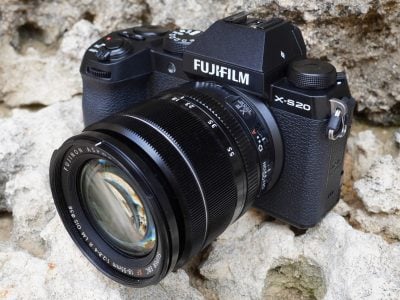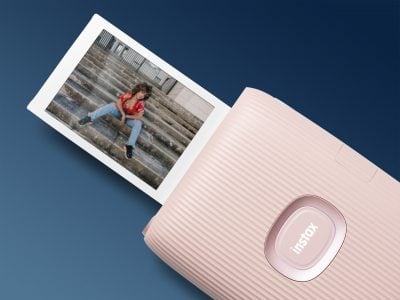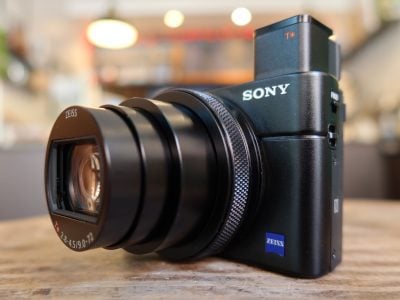Nikon D5000
-
-
Written by Gordon Laing
Nikon D5000 results : Real-life resolution / Studio resolution / Noise vs 500D / T1i & E-620 / Noise vs D90
Nikon D5000 results : Real-life resolution / Studio resolution / Noise vs 500D / T1i & E-620 / Noise vs D90
Nikon D5000 vs D90 vs Canon EOS 500D / T1i High ISO Noise
|
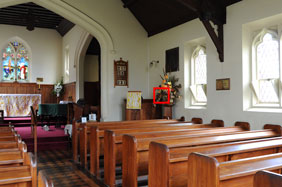 | To compare noise levels under real-life conditions we shot this scene with the Nikon D5000, D90 and Canon EOS 500D / T1i within a few moments of each other using each of their ISO settings. Each camera was fitted with its respective kit lens (see details below) and adjusted to deliver the same vertical field of view. The images were focused in Live View and taken in Aperture Priority at f8 with Auto White Balance |
The image above was taken with the Nikon D5000 at a sensitivity of Lo1 (100 ISO) with the kit lens set to 24mm f8; the original Large Fine JPEG file measured 4.35MB. The crops below are taken from an area marked by the red square and presented at 100%.
We used the default high ISO noise reduction settings for each camera: ‘Normal’ on the D5000 and D90, and ‘Standard’ on the 500D / T1i. The Auto Lighting Optimizer on the 500D / T1i and Active D-Lighting on the Nikons were also disabled to avoid noise from being introduced.
The Nikon D5000 shares the same sensor and image processing as the D90, so it’s no surprise to find them delivering very similar results across their sensitivity ranges below. A slight under-exposure on the part of the D90 has resulted in its samples being a little darker, but it’s clear both cameras are performing essentially identically in terms of noise and noise reduction.
As such, the samples at 100 (L1.0) and 200 ISO are very clean and detailed with noise textures only beginning to really appear on the Nikon crops at 400 ISO.
As before, these noise levels steadily increase with the sensitivity, although as also seen on the previous page, the Nikons suffer less than the Canon EOS 500D / Rebel T1i. The Canon becomes noticeably softer and de-saturated from 800 ISO upwards, while the Nikons manage to keep it together.
So as we said on the previous page, the Nikons take the lead here, with cleaner images across their range and essentially the same degree of real-life detail when the conditions and settings are favourable. It once again proves having more Megapixels isn’t necessarily better unless you’re shooting charts at low sensitivities.
As for the D5000 versus the D90, there’s little if anything to choose between them in terms of image quality. This is a great result for the D5000, as it inherits a sensible approach to resolution, noise and processing which deliver some of the best-looking images in its class.
For our full analysis of the 500D / T1i against the D5000 (and Olympus E-620), see our previous Noise Results page.
Now let’s take a look at some more real-life examples across the sensitivity range in our Nikon D5000 gallery.
Nikon D5000 with Nikkor DX 18-55mm VR |
Nikon D90 with Nikkor DX 18-105mm VR |
Canon EOS 500D / T1i with Canon EF-S 18-55mm IS | ||
 |
 |
 | ||
L1.0 (100 ISO) |
L1.0 (100 ISO) |
100 ISO | ||
 |
 |
 | ||
200 ISO |
200 ISO |
200 ISO | ||
 |
 |
 | ||
400 ISO |
400 ISO |
400 ISO | ||
 |
 |
 | ||
800 ISO |
800 ISO |
800 ISO | ||
 |
 |
 | ||
1600 ISO |
1600 ISO |
1600 ISO | ||
 |
 |
 | ||
3200 ISO |
3200 ISO |
3200 ISO | ||
 |
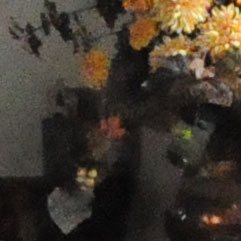 |
 | ||
H1.0 (6400 ISO) |
H1.0 (6400 ISO) |
6400 ISO | ||
 |
 |
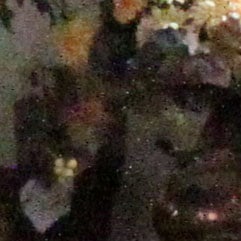 | ||
12800 ISO not available |
12800 ISO not available |
12800 ISO |

